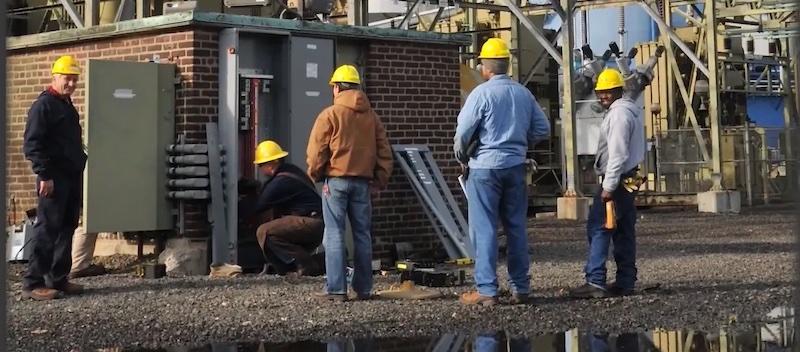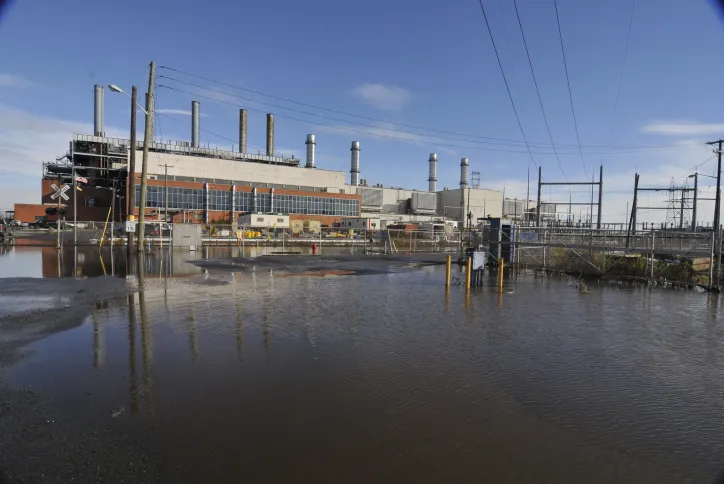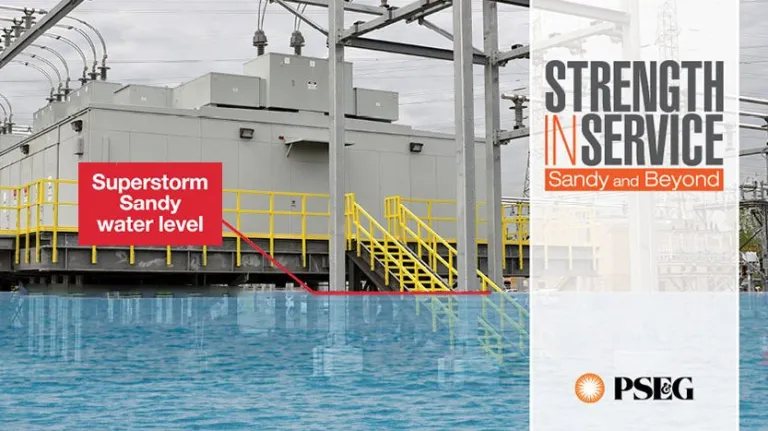Rebuilding and Reflecting After Superstorm Sandy
Originally published on PSEG ENERGIZE!
What do I remember about Superstorm Sandy? It’s a life experience I’ll never forget.
In 32 years of working storms, I’ve never seen anything like it before or after. For weeks, the crews and I worked long 16-hour days to restore customers’ power as quickly as possible.
Like countless residents of New Jersey, many PSE&G employees experienced extreme hardship in the weeks after the storm. There were guys whose homes were destroyed who still showed up for work.
My own basement was severely flooded. Every night after my long work shifts, I was going home to drain my basement. I kept hoping that by the time I came home the water levels wouldn’t be up to the level of my furnace. I don’t think I could have made it through that storm without my crew – good people that knew how to make each other laugh, and who always put each other first.
As a manager in the storm division, I oversee contractors in my region of Palisades. Typically, there are only 100 contracted lineworkers at a time. During Sandy, that number shot up to over 1,000.
Post-storm, substations that had never experienced water were suddenly completely underwater. We quickly realized the nature of the problem was very different from what we were used to. When there’s that much water in the station, we have to shut it down completely. It was a huge effort involving cleaning and testing all the equipment before the station can come back online.
Because of the massive damage to local infrastructure and landscapes, many roads were inaccessible. We started tracking which roads and highways were closed off so we could get our crews and materials to the areas where they were needed.
Things were so bad, we couldn’t even get gas. New Jersey is lucky because there are oil refineries in the state. But the post-storm damage was so bad, that some of the refineries shut down. There were long lines at the gas stations, even for the first responders. Throughout the restoration, customers were very understanding, watching how hard we were working day in and day out. They would even bring coffee out to our crews to help keep them going.
There were a ton of lessons learned from Sandy. It wasn’t something we had dealt with before. In a typical rain storm, flooding is from high volumes of rain above. But in Sandy, the state also experienced an unprecedented ocean surge, which heavily affected stations that were coastal.
I don’t want any more Sandy’s, but it’s where we’re heading with climate change. After Sandy, we put a lot of work into rebuilding the stations with similar big storms in mind. I was involved in the start of the post-Sandy infrastructure program, Energy Strong. The Energy Strong program was designed to strengthen our electric and gas systems to withstand storms, improve reliability and enhance resiliency. For example, we now have more storm walls for the stations.
Nearly 10 years after Superstorm Sandy, Hurricane Ida once again tested the stations that had once flooded. Although these stations experienced water surge levels very similar to Sandy, because of our work to raise and rebuild them, they did not go offline. Ida could have put us in a very similar situation as Sandy, and I was proud that it didn’t.





